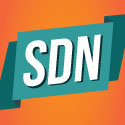Perseus tapped Plexxi software-programmable switches to provide agility, rapid service deployment, minimal security and reduced cost on a network spanning four continents in two hemispheres.

Perseus is deploying SDN over a 75,000-mile global network spanning Asia, Europe, North America and Latin America, in a mission to challenge established carriers.
Perseus, a managed service and connectivity provider, expanded its core infrastructure into Asia-Pacific last year to provide services to a few customers and extend its footprint with more than just point-to-point networking, Andrew Kusminsky, Perseus COO, tells Light Reading. (See Perseus Picks Plexxi for Global Transport.)
The company did its research, checking out networking leaders, including Cisco Systems Inc. (Nasdaq: CSCO) and Juniper Networks Inc. (NYSE: JNPR).
Perseus settled instead on Plexxi , which directs traffic on networks using its own programmable, software-defined hardware switches. (See SDN Startup Plexxi Raises $35M for 'Invisible' Networks.)
"We decided on Plexxi because of the unique ability to provide us with a platform with a resilient, redundant framework," Kusminsky said. Additionally, Perseus required high security, as 85% of its customers are in the financial industry.
Perseus has deployed Plexxi in Japan, Singapore, Hong Kong, the Philippines, Australia, North America and most of Europe. It is expanding its Plexxi-based network to Latin America, including all of Brazil and Mexico. That will give Perseus's SDN network global coverage by the end of the second quarter of 2016, Kusminsky says. Overall, Perseus has points of presence in more than 100 data centers, in 54 countries on six continents.
The Perseus network provides multipoint Ethernet connectivity, to multiple locations. The company also plans to deploy low-latency services, and is looking into NFV. Perseus's network allows users to provide redundant failover between multiple, geographically separated data centers, move compute between sites, and provide bandwidth on demand -- all running on any type of network.
Kusminsky declined to say specifically how much Perseus is spending on the project. "It was a lot of money but it was worth it -- to develop our own software across our own kit would have taken us years," he says. "The platform already exists. The time to market to deploy this outweighs the cost."
"They wanted to build a new kind of network," Plexxi CEO Rich Napolitano says. "They felt this is the net era of IT, and they needed a different level of agility and flexibility to deliver services very rapidly and cross the globe, controlling not only their speed of execution and delivery but also their operating expense."
Napolitano adds, "They looked at everything. Their conclusion was they could build tomorrow's networking on yesterday's technology, but it might be better to build tomorrow's network on tomorrow's technology."
Plexxi's software-programmable switches are designed to provide agility, enabling the rapid deployment of services at minimal operating expense, Napolitano says. In other words: Plexxi is delivering the benefits of a New IP architecture.
Perseus is one of Plexxi's biggest customers, and while it's not their biggest deal, it is physically Plexxi's biggest deployment.
Want to know more about SDN? Visit Light Reading's SDN technology content channel.
"Truthfully, back in the summer, we didn't know how to do it. We learned a lot in the process," Napolitano says. For example, Perseus pushed Plexxi to deal in much larger distances and latencies than it had previously. Plexxi's previous biggest separation between nodes was 80km; now it is having to cross the Pacific Ocean. Also, Plexxi had never dealt with undersea cables -- previously, its technology worked on dark fiber.
Perseus's deployment is part of the trend toward cloudifying enterprise apps. Moving apps to the cloud requires "fluidity of services across disparate physical locations," Napolitano says. "Data doesn't live in one spot anymore -- data lives in many spots." Cloud apps require moving data to multiple locations or -- conversely -- collecting data from multiple locations for centralized analysis.
Plexxi provides multiple different paths between locations for redundancy and to maximize performance. Napolitano compared Plexxi to the Waze app -- it knows all the different paths between locations and can calculate the best one.
Related posts:
— Mitch Wagner, 


 , West Coast Bureau Chief, Light Reading. Got a tip about SDN or NFV? Send it to [email protected].
, West Coast Bureau Chief, Light Reading. Got a tip about SDN or NFV? Send it to [email protected].
About the Author(s)
You May Also Like











